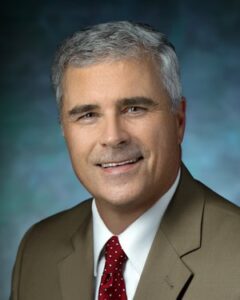Takeaway
Basketball players have a ritual followed by a pause before shooting a free throw. Clinicians can do likewise to be fully present for their next patient.

Lifelong Learning in Clinical Excellence | February 15, 2022 | 1 min read
By Richard Schaefer, MD, MPH, Johns Hopkins Medicine
Position the feet. One, two, three bounces of the ball. Deep breath. Stop. Eyes on the basket. Launch deliberately.
Basketball players typically have a set routine they follow each time before shooting a free throw. The ritual helps them settle their nerves and block out distractions such as crowd noise. While their routines may vary, such as how many times they bounce the ball, players do it the same way every time to focus on the task at hand.
In a similar way, before a patient encounter, a short ritual can help busy clinicians put aside the many other things that may be going through their minds: other patients, deadlines, schedule disruptions, charting, financial concerns, and a myriad of others, both professional and personal. Giving undivided attention to the patient can improve diagnostic accuracy and increase patient satisfaction. Additionally, a clinician’s ritual can also be used as a deliberate reminder to be aware of potential biases they may have.
Surgeons may have specific routines such as the way they scrub their hands before entering the operating room. In the outpatient setting, clinicians can have a system to deliberately stop, take a slow and deep breath, and focus before seeing the next patient. Dr. Ronald Epstein’s, “Attending: Medicine, Mindfulness, and Medicine,” pauses for three seconds with his hand on the door before entering the room. He uses this short time to consciously quiet his mind to be completely present for his next patient. Other routines might be mindfully washing one’s hands, or carefully checking the patient’s full name. Regardless of the specifics of the ritual, these moments are used to focus and direct undivided attention to the next patient before starting the encounter.
At the free throw line, the athlete blocks out distractions and concentrates on making that one basket. A brief routine and pause can help a busy clinician reset and mindfully focus on their “free throw”—excellent care for the most important patient at that time, the one they are about to see.
This piece expresses the views solely of the author. It does not necessarily represent the views of any organization, including Johns Hopkins Medicine.

